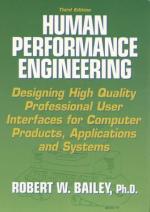|
This section contains 240 words (approx. 1 page at 300 words per page) |
An embedded menu is a menu that is placed within another menu or text. When part of another menu, such as the Speller, Thesaurus, and Grammar writing tools in Windows, an embedded menu pops up when the appropriate command button is clicked. When part of text, highlighted words or phrases are the menu items. Underlining or bolding of the text are common highlighting methods. The menu is selected by clicking on the highlighted text.
Embedded menus are useful in on-line technical documents, or to expand the functional variety that can be invoked by a program menu bar. Menus can also be embedded in applets, mini-programs that can be invoke to run within existing programs in the Java operating language. These use of embedded menus in applets allows the applet to be more functional than it could otherwise be.
Embedded menus are often easier to use than menus that cannot be invoked to appear (explicit menus), because only a simple cursor movement--a single keystroke or the click of a mouse button--is required to find the object of interest. Another benefit of embedded menus is that the menu information can be tied directly to the related information in the menu bar or text. This saves screen space, which is valuable in the era of the pocket-sized viewing screens of personal digital assistants. For these and other reasons, embedded menus will likely remain an important technique of human-computer interaction.
|
This section contains 240 words (approx. 1 page at 300 words per page) |


